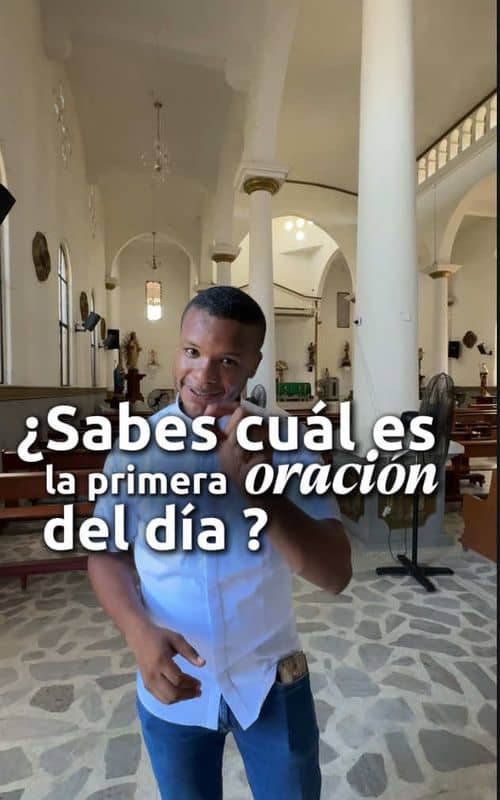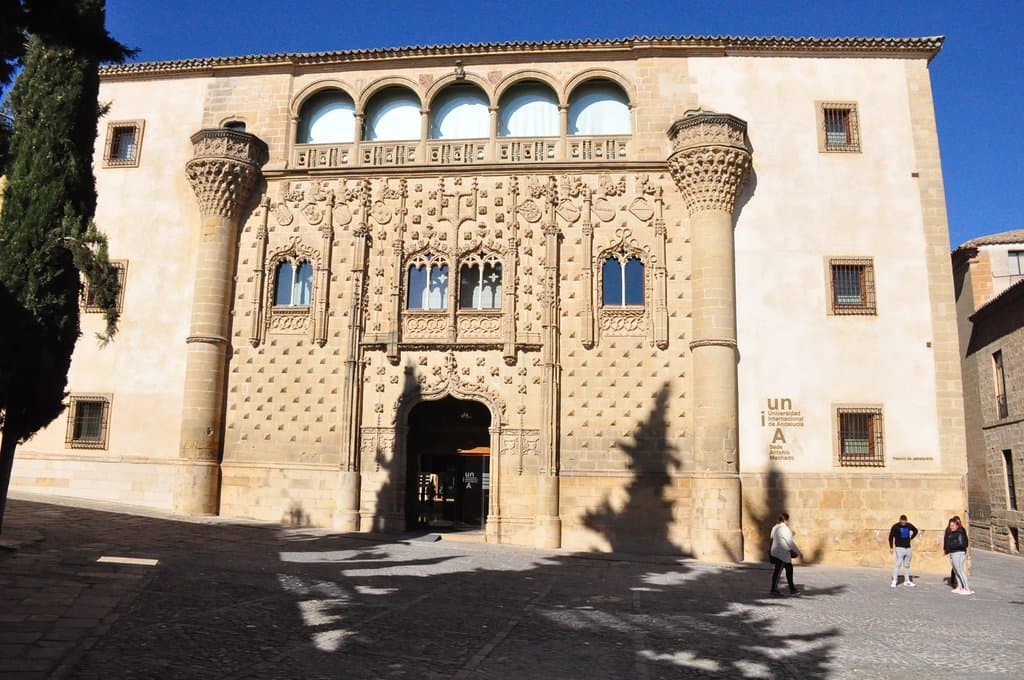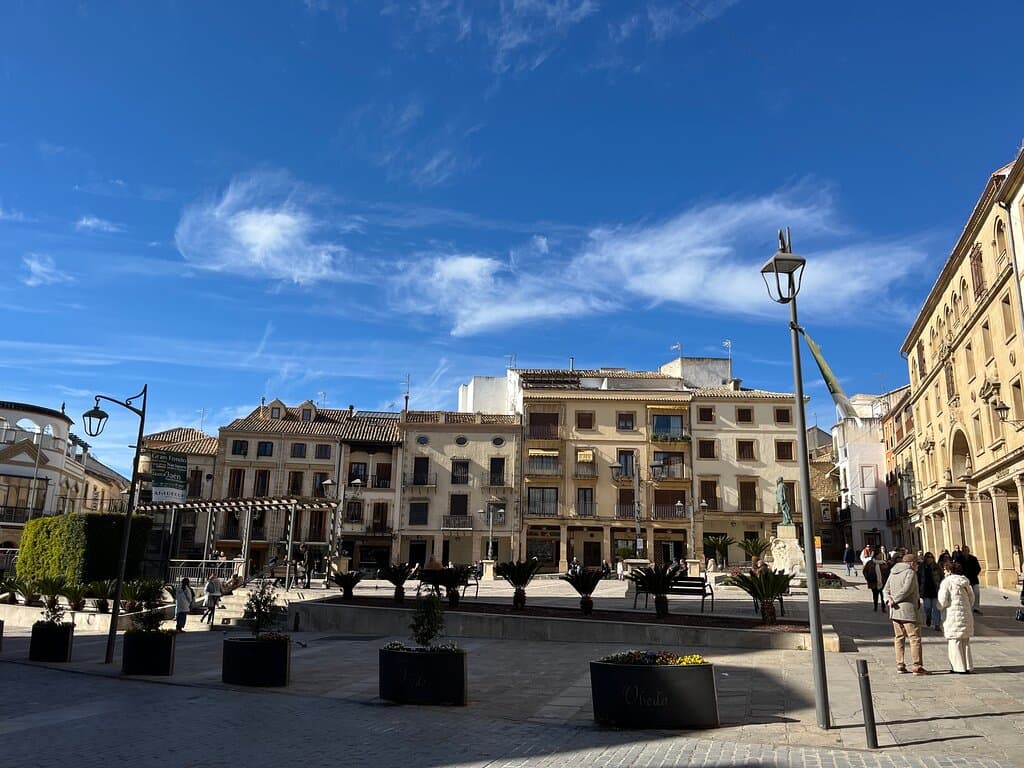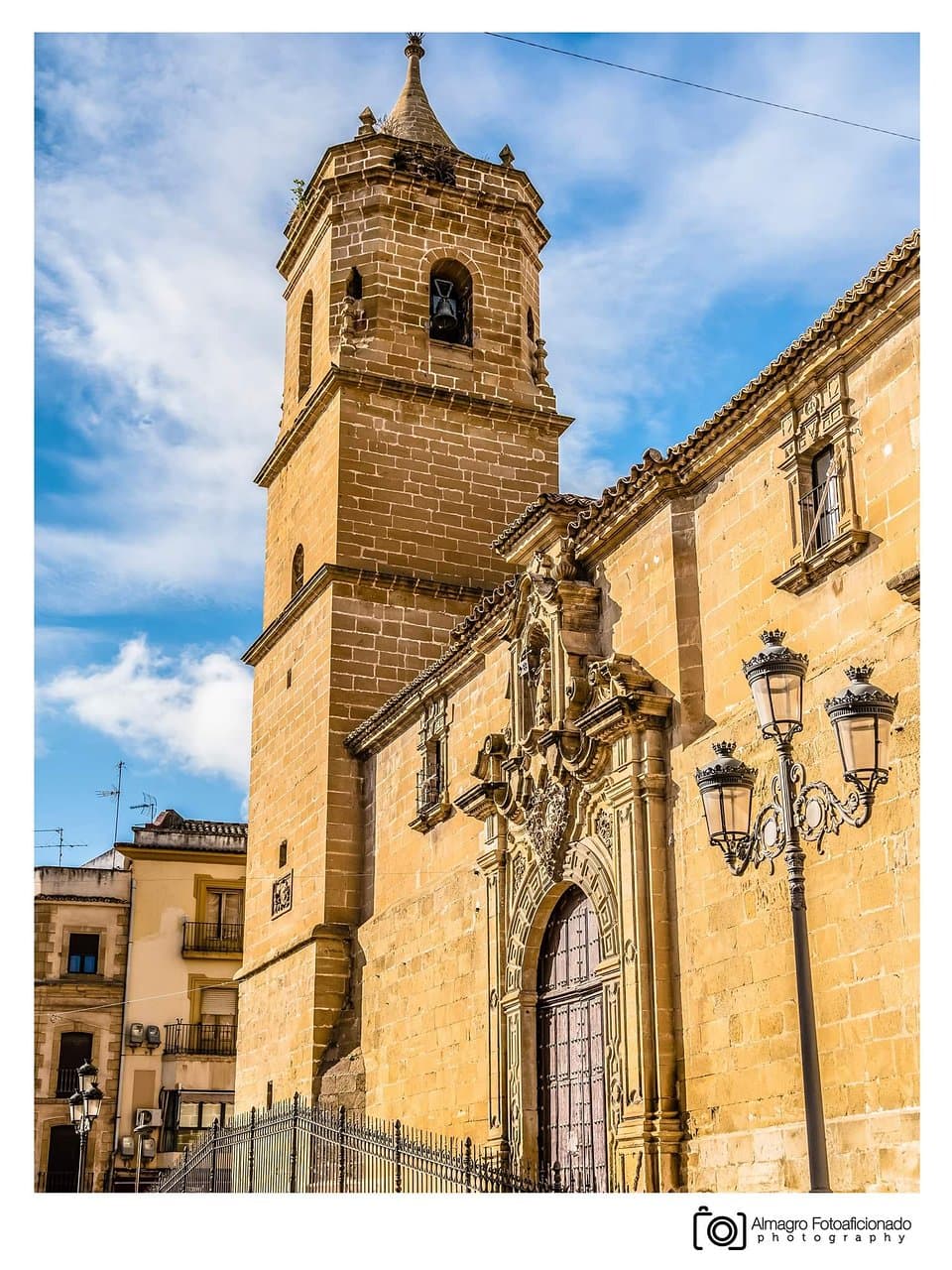Oratorio de San Juan de la Cruz
The first church dedicated to Saint John of the Cross, housing his cell and tomb, with an adjacent museum of relics.
Highlights
Must-see attractions

Social
From TikTok & Reddit
Best Time
Fewer crowds, peaceful reflection
Oratorio de San Juan de la Cruz
Best Time
Fewer crowds, peaceful reflection
Highlights
Must-see attractions
The first church dedicated to Saint John of the Cross, housing his cell and tomb, with an adjacent museum of relics.
"An emblematic place in Úbeda, offering a profound connection to Saint John of the Cross."
Allow ample time
Dedicate at least 1-2 hours to explore both the Oratorio and the museum thoroughly. :clock1:
Respect the sanctity
This is a place of religious significance; maintain a quiet and respectful demeanor. :pray:
Highlights
Discover the most iconic attractions and experiences
Saint John of the Cross's Cell
Upper choir stall
Step into the very cell where the revered saint spent his final moments. A deeply spiritual and historical space.
Museum of Saint John of the Cross
Adjacent to the Oratorio
Explore 12 rooms filled with relics, memorabilia, and art dedicated to the life and teachings of the saint.
Baroque Oratory and Tomb
Main Oratorio
Admire the Baroque architecture and see the tomb where Saint John of the Cross was initially buried.
Plans like a pro.
Thinks like you
Planning Your Visit
Timing Your Visit
Understanding the Significance
Best Times
Insider Tips
from TikTok, Instagram & Reddit
Allow ample time
Dedicate at least 1-2 hours to explore both the Oratorio and the museum thoroughly. :clock1:
Respect the sanctity
This is a place of religious significance; maintain a quiet and respectful demeanor. :pray:
Check museum hours
Verify opening times for the museum, as they can vary. :calendar:
Tips
from all over the internet
Allow ample time
Dedicate at least 1-2 hours to explore both the Oratorio and the museum thoroughly. :clock1:
Respect the sanctity
This is a place of religious significance; maintain a quiet and respectful demeanor. :pray:
Check museum hours
Verify opening times for the museum, as they can vary. :calendar:
What Travellers Say
Reviews Summary
Visitors praise the Oratorio de San Juan de la Cruz as a beautiful and historically significant site, particularly for its connection to Saint John of the Cross. The museum is noted for its collection of relics and art, offering a deep dive into the saint's life. Some mention the importance of checking hours for the museum.
"A beautiful oratory attached to the Museum dedicated to Saint John of the Cross. Saint John died here in Úbeda, and his cell was located next to the oratory in the upper choir stall. It should be noted that this was the first church in the world built in honor of Fray Juan de la Cruz. The museum consists of 12 rooms that house various relics and other memorabilia linked to the saint.
The chapel is Baroque in style and belongs to the Discalced Carmelite Order. It houses the tomb where Saint John of the Cross was buried until 1593."
Katy Sánchez
"An excellent oratory with a museum dedicated to Saint John of the Cross. This important saint died there at midnight on December 14th. It houses numerous ancient and modern religious artifacts. The paintings, both ancient and modern, are also very interesting. The site has been extensively renovated because, like so many churches, it was attacked during the Civil War."
Vi Maca
"The first church dedicated to this Saint in the world, in its choir was located the cell in which he died."
Rafael Merelo
What People Like
What People Dislike
Frequently Asked Questions
🚇 🗺️ Getting There
The Oratorio is located in Úbeda, Spain. If arriving by car, there is parking available nearby. Public transport options might be limited within Úbeda itself, so checking local bus routes or considering a taxi from a central point is advisable. Many visitors find it easily accessible on foot if staying within the historic center.
The Oratorio is generally accessible, though as a historic site, some areas might have limitations. It's recommended to check for specific accessibility information if needed.
🎫 🎫 Tickets & Entry
Entry to the Oratorio itself is often free, but the attached museum dedicated to Saint John of the Cross typically requires a ticket. It's best to confirm current admission policies before your visit.
Opening hours can vary, especially for the museum. It's highly recommended to check the official website or contact the local tourist office for the most up-to-date information on hours of operation.
Often, a single ticket covers both the Oratorio and the Museum of Saint John of the Cross, offering a comprehensive experience of the site. Confirm this when purchasing your entry.
🎫 🧭 Onsite Experience
Inside, you'll find the Baroque chapel, the tomb where Saint John of the Cross was initially buried, and access to his cell in the upper choir stall. The attached museum houses numerous relics and memorabilia.
To fully appreciate the historical and spiritual significance, plan for at least 1 to 2 hours. This allows time to explore the museum's 12 rooms and reflect within the Oratorio.
Photography rules can vary. It's generally advisable to be discreet and check for any posted signs regarding photography, especially in areas with religious artifacts.
🍽️ 🍽️ Food & Dining
Úbeda has a rich culinary scene. You'll find numerous restaurants and tapas bars in the vicinity of the Oratorio, offering traditional Andalusian cuisine. Exploring the historic center will reveal many delightful options.
📸 📸 Photography
The Baroque architecture of the Oratorio itself offers beautiful interior shots. The museum's collection of religious artifacts and paintings also provides unique photographic opportunities. Remember to be mindful of any restrictions.
For Different Travelers
Tailored advice for your travel style
Pilgrims and Religious Seekers
History and Art Enthusiasts
Deep Dives
In-depth insights and expert knowledge
The Life and Legacy of Saint John of the Cross
His death in Úbeda on December 14, 1591, marks this site as profoundly significant. The Oratorio stands as the first church globally consecrated in his honor, and within its walls, visitors can connect with his final earthly moments by visiting his cell. The museum further illuminates his life through a collection of relics, personal items, and artistic representations, offering a comprehensive understanding of his enduring influence on religious thought and practice.
Architectural and Historical Significance
Historically, the site has undergone significant renovations, particularly after damage sustained during the Spanish Civil War. This restoration work has been crucial in preserving the Oratorio and its treasures for future generations. As the first church dedicated to Saint John of the Cross, it holds immense historical and religious importance, serving as a pilgrimage site for those seeking to connect with the saint's spiritual heritage.




Social
from TikTok, Instagram & Reddit